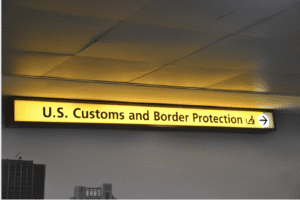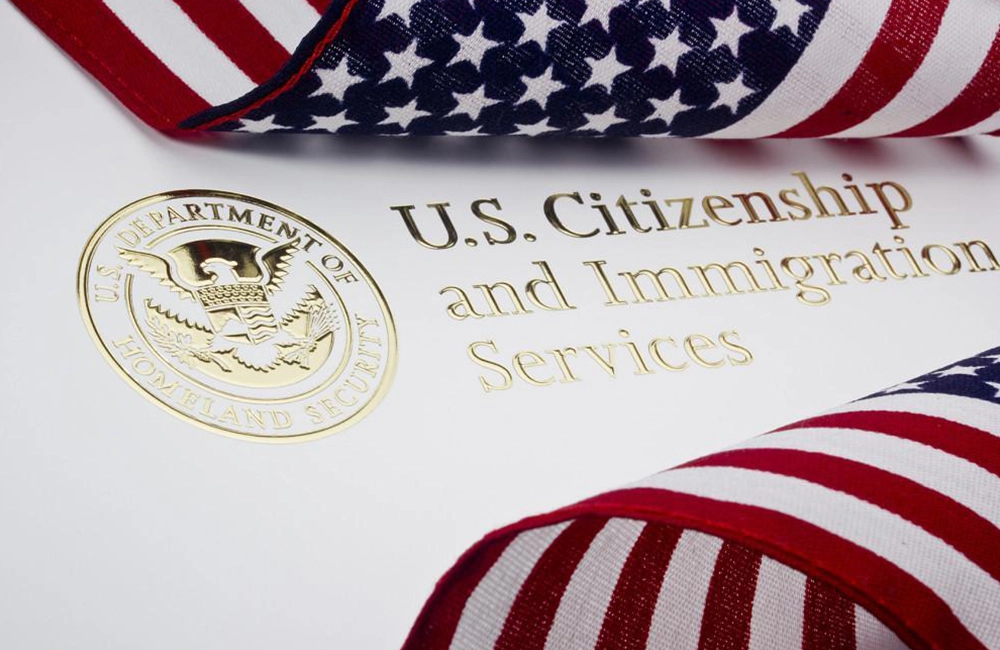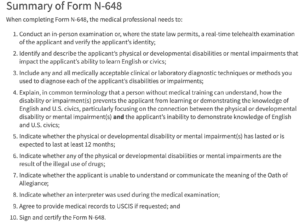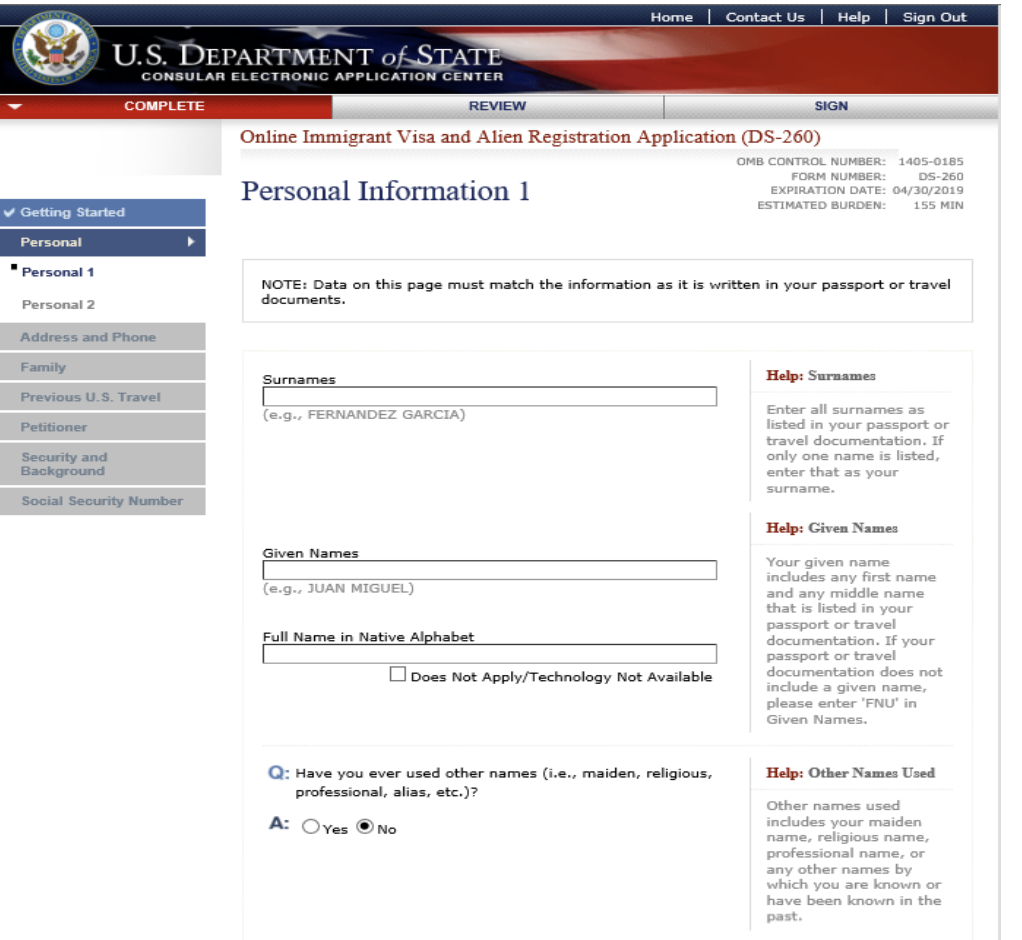H-1B Travel while I-485 Pending
Many H-1B visa holders who have filed I-485 applications are finding difficulty identifying the proper procedure for reentry into the United States after traveling abroad. However, there are two possibilities that can occur depending on the specific visa status. The foreign national has the option to either reenter the country through Advance Parole (AP) or a valid H-1B visa stamp. However, there are major differences between the two. Learn how to navigate travel with an I-485 pending and more!
H-1B Visa Background
The H-1B is a very versatile visa and is sought after because of its relatively low requirements and the variety of benefits it brings. The ability to stay in the U.S. for six years, port your visa status from one job to another, work full or part-time, and even work for several employers at once is unmatched by other nonimmigrant visas.
Read More: H-1B Visa 2022-2023 Cap Season: The Definitive Guide
Another major advantage is the ability to travel in and out of the U.S. under H-1B status. However, there are stipulations once you file for an adjustment of status.
Adjusting Your Status
If you are in the U.S. under a nonimmigrant status (like the H-1B), then you can file the I-485 to adjust your status from nonimmigrant to immigrant status. However, just because your I-140 was approved, doesn’t mean that the I-485 is just a formality. Many people think that they can act as though they already have a green card while their I-485 is pending. In reality, your I-485 is open to being denied, which would deny you a green card. For this reason, you should exercise caution when traveling under a nonimmigrant status. If you don’t have Advance Parole, you may cause your adjustment of status application to be void by leaving the U.S.
Traveling With a Valid Nonimmigrant Status
Can I travel while my adjustment of status is pending?
If you are going to travel outside of the U.S. while your I-485 adjustment of status petition is pending but you still have a valid H-1B valid visa, then you can use the H-1B visa to re-enter the U.S. after your journey abroad. In this case, you don’t need to obtain any other travel documents. This is one of the benefits of maintaining a valid nonimmigrant status from the beginning to the end of your green card application process.
Traveling Out Without a Valid Nonimmigrant Status
If you do not have a valid H-1B status, you will need to obtain advance parole before traveling. Otherwise, you may not be allowed to re-enter the U.S. after your journey abroad. Using advance parole can sometimes come with certain limitations though, as you are not guaranteed re-entry upon arrival at the port of entry. Also, if your I-485 is not approved, you will have no underlying nonimmigrant status and may lose the eligibility to continue staying in the United States.
What is Advance Parole?
There may be a circumstance where you need to travel outside of the U.S. If your H-1B visa has expired or your I-94 departure date has passed, you will not be able to return to the U.S. afterward. Advance Parole is the form that allows those without valid visas to come back to the country after having been abroad. It does not count as a visa or a re-entry permit, but rather as a one-time exception to the rule. You can file for Advance Parole by submitting an I-131 form to the USCIS.
You must make sure that the I-131 is fully approved before departing the country. Otherwise, you risk having your I-485 adjustment of status application automatically denied. If your Advance Parole is approved, you will receive an I-512, which will allow you to leave and return without jeopardizing your adjustment of status. Keep in mind that you will still be inspected at customs, so Advance Parole does not absolutely guarantee that you will be permitted to return.
It is important to note what conditions the USCIS places on your Advance Parole. Some I-512 forms are issued to allow for multiple re-entries into the U.S. while others are issued for only one single re-entry. These decisions are on a case-by-case basis up to the discretion of the USCIS.
It is possible to have your I-131 expedited if you have extenuating circumstances. If these circumstances constitute an emergency, you can request an emergency Advance Parole.
Emergency Advance Parole
As previously mentioned, there is an option for emergency advance parole in extreme cases. Contact your local USCIS field office center and bring these items to your appointment:
- Completed Form I-131
- I-131 filing fee
- Documentation proving the emergency situation request (i.e., medical documents, death certificate, etc.)
- Two passport-style photos
Can I Travel if I-485 is Pending?
Nonimmigrant visa holders traveling outside the United States with a pending AOS
For most categories, if the foreign national holds a nonimmigrant visa and is filing for an adjustment of status, it is mandated not to travel unless he/she has an Advance Parole. However, there are a few exceptions to this rule. H-1B, L-1, and K-3/4 visa holders do not need to get an advance parole document as long as they have a valid visa. The Adjustment of Status (AOS) petition is the final stage in obtaining a United States green card. As a result, it takes longer to process through the USCIS. During this critical time of processing, the petitioner is advised to avoid any of the following actions which would cause the USCIS to believe the petition has been abandoned.
Actions that can lead to Adjustment of Status Petition Abandonment:
- Does not respond to USCIS requests
- Does not appear at scheduled interviews
- Does not provide fingerprints/biometrics
- Travels outside the United States without obtaining an Advance Parole
If the AOS has been deemed “abandoned” and the petitioner wishes to stay in the United States, the petitioner will be required to file the proper documentation in order to maintain valid nonimmigrant status.
Due to the high risks, AOS petitioners who wish to travel are highly advised to obtain Advance Parole (AP) before traveling outside the United States. Failure to receive the AP before traveling will result in AOS petition abandonment.
H-1B holders traveling outside the United States with pending AOS
If the applicant has a valid H-1B visa and possesses a pending AOS application, it is not mandated to obtain Advance Parole to reenter the United States. Actually, if an H-1B visa holder reenters the United States with the Advance Parole, his/her H-1B status will be terminated. The foreign national would then be labeled as a “parolee.” A “parolee” is able to continue working under the H-1B employer. However, he/she will not be able to obtain valid H-1B status until the employer has filed for an extension and had the application approved on his/her behalf. Though, this condition is only valid if “the alien’s H-1B employment authorization would not have expired had the alien not left and returned under advance parole.” To avoid complications and maintain H-1B status, the visa holder must reenter with the H-1B visa and meet the following requirements:
- Hold a valid H-1B entry visa on his/her passport
- Maintain the same H-1B sponsoring employer (he/she cannot change employers)
If the foreign national under H-1B status has reentered under AP and the AOS (Form I-485) has been denied, the foreign national is considered out of status.
We understand how this process can be confusing. If you have any additional questions please contact the VisaNation Law Group. Their immigration attorneys are able to assist and advise clients who are in complicated situations relating to Advance Parole, Adjustment of Status, and H-1B.
How to Obtain Advance Parole
Obtaining an advance parole document can be a relatively simple process. You will only need to file an I-131, Application for Travel Document. The I-131 form is used to request three different travel documents, namely Advance Parole, Refugee Travel Document, and Re-entry Permit.
So, in your own case as an H-1B worker with a pending AOS application, what applies to you is advance parole. The I-131 form can be submitted together with your I-485 petition (concurrently) or filed later for a pending petition. The I-131 form document checklist includes evidence of your current status, an explanation or evidence establishing that there are circumstances that warrant the intended international travel, and the issuance of advance parole. You will also need to provide a copy of the USCIS notice of receipt to prove you have a pending AOS application.
Frequently Asked Questions
How Long Can I Stay Abroad on Advance Parole?
Typically, advance parole is valid for up to one year. So, it is safe to say you can stay abroad for as long as your advance parole is valid. However, make sure you return to the U.S. before its expiration.
That being said, it is worth noting that the issuance of advance parole is a discretionary action and there is no law mandating the USCIS to grant the request or issue it with a particular validity period.
While you may be allowed to stay abroad as long as your advance parole remains valid, you should not forget that you may miss some important things involving your pending AOS petition. For instance, the USCIS may want to reach out to notify you concerning your biometrics appointments, interview, and other aspects of the application. If you are not around to attend or schedule postponements for those appointments, this may have an impact on the entire AOS application process.
How Many Times Can I Use Advance Parole to Re-enter the U.S.?
In most cases, the USCIS issues advance parole for multiple entries, meaning you can use it to travel out and re-enter the U.S. as long as it remains valid. However, this is another discretionary part of the request, and it is not impossible or necessarily uncommon for the USCIS to issue advance parole for a single entry.
What If My I-485 Petition Is Denied While on Advance Parole?
If you re-enter the U.S. with advance parole and you have not yet submitted an H-1B petition to the USCIS, you will be considered as still being in parolee status. If in this case and your I-485 petition is denied, you will be out of status the moment the denial notice is issued. To make it more complicated, the time you spent from the moment you entered on advance parole will be viewed as unlawful presence, which may affect your eligibility for future immigration applications and other benefits.
How Does Being on Parolee Status Affect My H-1B Job?
If you travel abroad and re-enter the U.S. using advance parole, your status, as shown on your I-94, will indicate you to be a “parolee.” While on this status, you can only work for the employer with whom you had an H-1B petition approval before leaving the United States.
If you want your I-94 to change from parolee back to H-1B, you will need to file an H-1B amendment, extension, or transfer after re-entering on advance parole. If the petition is approved, then you will get a new I-94 status showing you as an H-1B holder.
Can I Change Employers after Re-entering with Advance Parole?
If you want to re-enter the U.S. from international travel and then immediately start to work for a new employer different from your H-1B employer, you will need to obtain a green card application-based employment authorization document (EAD). The implication, however, is that you will not be able to return to H-1B status again. This is because once an H-1B worker switches from nonimmigrant status to an AOS-based EAD, you will not be able to file for an H-1B amendment, extension, or transfer.
Am I considered a permanent resident once I submit my adjustment of status application?
Not quite, you have to wait for it to be approved first.
Can I Be Denied Entry at the POE Despite Having Advance Parole?
Yes, you may still be denied entry to the U.S. even when you have valid advance parole. While advance parole is a valid travel document, according to the USCIS, having it does not guarantee you will be granted re-entry to the United States. You will still have to go through some checks with the U.S. Customs and Border Protection (CBP) officials at the border or airport. The CBP will make the final decision on whether or not to allow you to re-enter the United States. Therefore, the safest thing is to keep your H-1B nonimmigrant status valid until you receive your green card.
If you have ever been arrested or convicted of a crime, involved in immigration court proceedings, or spent time outside the U.S. in unlawful status or detained at the border, it’s crucial to consult an immigration attorney before applying for advance parole.
What does I-485 pending mean?
The I-485 form is related to your employment-based adjustment of status application so I-485 pending means your adjustment of status has not been denied or approved yet.
I-485 Pending Tips
Below are some tips to keep in mind when traveling on H1B with an I-485 pending:
- Keep an eye out for requests and notices sent from USCIS and if necessary reply to any immediately
- Always attend scheduled interviews
- Provide all necessary evidence and documents, biometrics, etc.
How long does it take I-485 to be approved 2022?
If possible, the best course is to plan to stay in the U.S. for the 3-5 months following the submission of your green card application. Otherwise, apply for the travel document at the same time as your green card application. The travel document can take approx. 150 days or more to arrive after submitting the request. In the event that you do travel after receiving AP, make it a point to have USCIS notices sent to you while you are overseas; you can have someone check your mail or have your attorney inform you of these documents when they arrive at your U.S. address.






